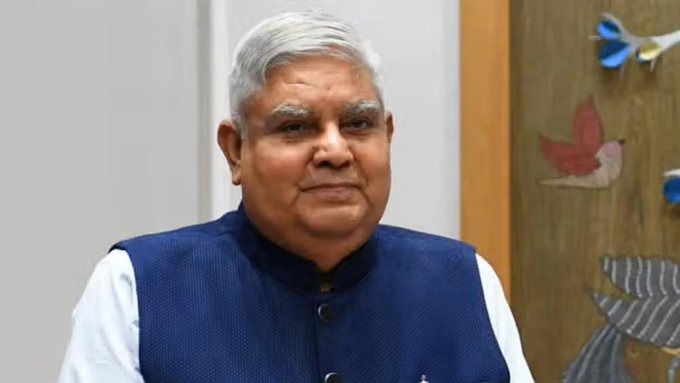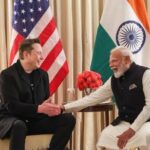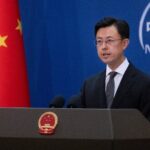July 23, 2025 | National Affairs
In an unprecedented development that has drawn the nation’s political and constitutional focus, Jagdeep Dhankhar, the 14th Vice President of India, submitted his resignation just three years into his tenure. The Election Commission of India (ECI), responding with swiftness and precision, has now initiated the preparatory process to conduct the Vice-Presidential election in accordance with constitutional guidelines.
With the sudden vacancy in one of the country’s highest constitutional offices, the spotlight is now firmly on Nirvachan Sadan, the headquarters of India’s election machinery. Here’s an in-depth look into how the Election Commission is preparing for this pivotal election, what the Constitution mandates, the political calculations at play, and what we can expect in the coming weeks.
Why This Election Is Significant
The Vice President of India holds a dual role — as the second-highest constitutional authority after the President and as the ex-officio Chairperson of the Rajya Sabha (Upper House of Parliament). With Jagdeep Dhankhar stepping down on July 21, 2025, citing health reasons, the country has entered uncharted territory. Never before has a Vice President resigned mid-term.
The Constitution under Article 68(1) makes it clear: the election for the Vice President must be held “as soon as possible” after the occurrence of a vacancy. The Election Commission, bound by this clause, wasted no time and began the process of identifying Returning Officers, planning logistics, and reviewing past election templates.
🏛️ Legal and Constitutional Framework
The Vice-Presidential election is governed by:
- Articles 63, 66, 68, and 324 of the Indian Constitution
- The Presidential and Vice-Presidential Elections Act, 1952
- The Presidential and Vice-Presidential Elections Rules, 1974
Unlike the President, who is elected by Members of Parliament and State Assemblies, only Members of Parliament (MPs) — both from the Lok Sabha and Rajya Sabha, including nominated members — participate in electing the Vice President.
As per the Election Commission, the electoral college for the upcoming election consists of 786 MPs (543 from Lok Sabha and 245 from Rajya Sabha). The candidate who secures the majority of valid votes cast through a single transferable vote (STV) system will be declared the winner.
⚙️ EC’s Immediate Action Plan
On July 23, just two days after the resignation was submitted, the Election Commission began:
- Consultations with both Houses of Parliament
- Finalising Returning Officers (ROs) and Assistant ROs
- Preparing the electoral roll of MPs
- Reviewing past VP election case studies and logistics
- Scheduling press briefings and legal notifications
A formal election notification is expected shortly, with the poll likely to be held in early to mid-August, keeping in line with the 30-day constitutional expectation.
🧮 Electoral Math: Who Holds the Advantage?
The BJP-led NDA currently enjoys a numerical advantage in both Houses of Parliament:
- Lok Sabha: BJP alone has 293 seats
- Rajya Sabha: NDA has around 129 seats
- Combined strength: Approx. 422 MPs
With the winning threshold pegged at 394 votes, the NDA is in a comfortable position — barring any major defections or surprises from alliance partners.
However, the Opposition’s INDIA bloc, despite lacking numbers, may still put up a symbolic fight, aiming to position the election as a referendum on democratic values and federal strength.
🔄 What Happens in the Meantime?
Until the new Vice President takes office:
- The Deputy Chairman of the Rajya Sabha, Harivansh Narayan Singh, will preside over the Upper House.
- He does not, however, possess the constitutional authority of the Vice President.
- The ceremonial and executive functions vested in the VP — especially in times of presidential absence — remain unexercised during the vacancy.
📜 Past Vice-Presidential Elections: A Quick Recap
To understand the process better, here’s a look at the 2022 Vice-Presidential election when Dhankhar defeated Opposition candidate Margaret Alva with a decisive majority.
- Dhankhar’s win: 528 votes
- Alva’s tally: 182 votes
- Turnout: 725 of 780 eligible MPs (92.75%)
The vote was conducted smoothly and with near-record turnout — something the EC is hoping to replicate this time too.
👤 Likely Candidates: Who Could Replace Dhankhar?
While no official names have been floated yet, sources from both the NDA and Opposition have hinted at a few potential names:
For the NDA:
- Ram Nath Thakur – JD(U) leader from Bihar and Rajya Sabha MP
- Anupriya Patel – Apna Dal leader, considered close to BJP
- Dr. Sudha Murthy – Eminent philanthropist and author (symbolic outsider)
For the Opposition:
- Gopal Krishna Gandhi – Former West Bengal Governor
- Sushil Kumar Shinde – Senior Congress leader
- Kalpana Saini – If looking for a backward caste appeal
This election may also witness regional politics, gender representation, or caste alignments playing key roles.
🗳️ Inside the Voting Process
The voting system is a secret ballot, and MPs cast their votes using a preference-based ranking. The ballot has only one column where the MP marks “1” against their first preference.
Votes are then counted using the single transferable vote system, where the second preference becomes relevant if no candidate crosses the required quota in the first round.
The Returning Officer, usually the Secretary-General of the Lok Sabha or Rajya Sabha, oversees the count along with observers appointed by the EC.
🧠 Political Implications
For the Ruling NDA:
- Opportunity to consolidate dominance in Parliament
- Strengthen control over Rajya Sabha functioning
- Possibly reward a key ally or regional player
For the Opposition:
- Opportunity to rally public sentiment
- Test the unity of the INDIA bloc
- Build symbolic momentum ahead of 2029 General Elections
This Vice-Presidential election may not change policy overnight, but symbolism matters, especially in Indian politics where optics often carry strategic weight.
🛑 Potential Challenges
While India has a history of well-conducted elections, there are a few areas of concern:
- Short timeline may lead to operational errors
- COVID-like unforeseen crises (unlikely, but India remains cautious)
- Ballot invalidation due to incorrect marking (as seen in previous elections)
- Judicial petitions that may delay results
The EC, known for its efficiency, has contingency plans for each of these possibilities.
📊 Fast Facts: The Office of Vice President
| Category | Details |
|---|---|
| First Vice President | Dr. Sarvepalli Radhakrishnan (1952) |
| Current Vacancy | Jagdeep Dhankhar resigned (2025) |
| Voting Method | Single Transferable Vote (STV) |
| Electoral College | MPs of Lok Sabha & Rajya Sabha |
| Total Members Voting | Approx. 786 |
| Term | 5 years |
| Eligibility | Indian citizen, 35+ years old, qualified for RS |
📅 Timeline to Watch
| Date | Event |
|---|---|
| July 21 | Jagdeep Dhankhar resigns |
| July 22 | Gazette notification of vacancy |
| July 23 | EC begins preparatory process |
| TBD (this week) | Election schedule announcement |
| Early August | Likely voting day |
| Mid-August | Results and swearing-in |
🔍 Expert Voices
“The Vice Presidential election may not command as much public attention as the Presidential one, but constitutionally, it is of equal gravity. The Election Commission is doing well to act fast.”
— Dr. Faizan Mustafa, Constitutional Law Expert
“For the ruling alliance, this election is a low-risk opportunity to promote inclusivity or reward loyalty. The choice of candidate will signal the tone for 2029.”
— Prof. S.Y. Quraishi, Former CEC of India
🧾 Conclusion: All Eyes on Nirvachan Sadan
India’s democratic machinery is once again on display — transparent, constitutional, and swift. With the resignation of a sitting Vice President, the nation is witnessing a rare political moment that not only tests the speed of its institutions but also the strategic choices of its political players.
As the Election Commission wraps up logistical arrangements, political corridors in Delhi are buzzing with meetings, negotiations, and calculations. In the days ahead, India will not just elect a new Vice President — it will define a new parliamentary tone for the rest of the decade.





